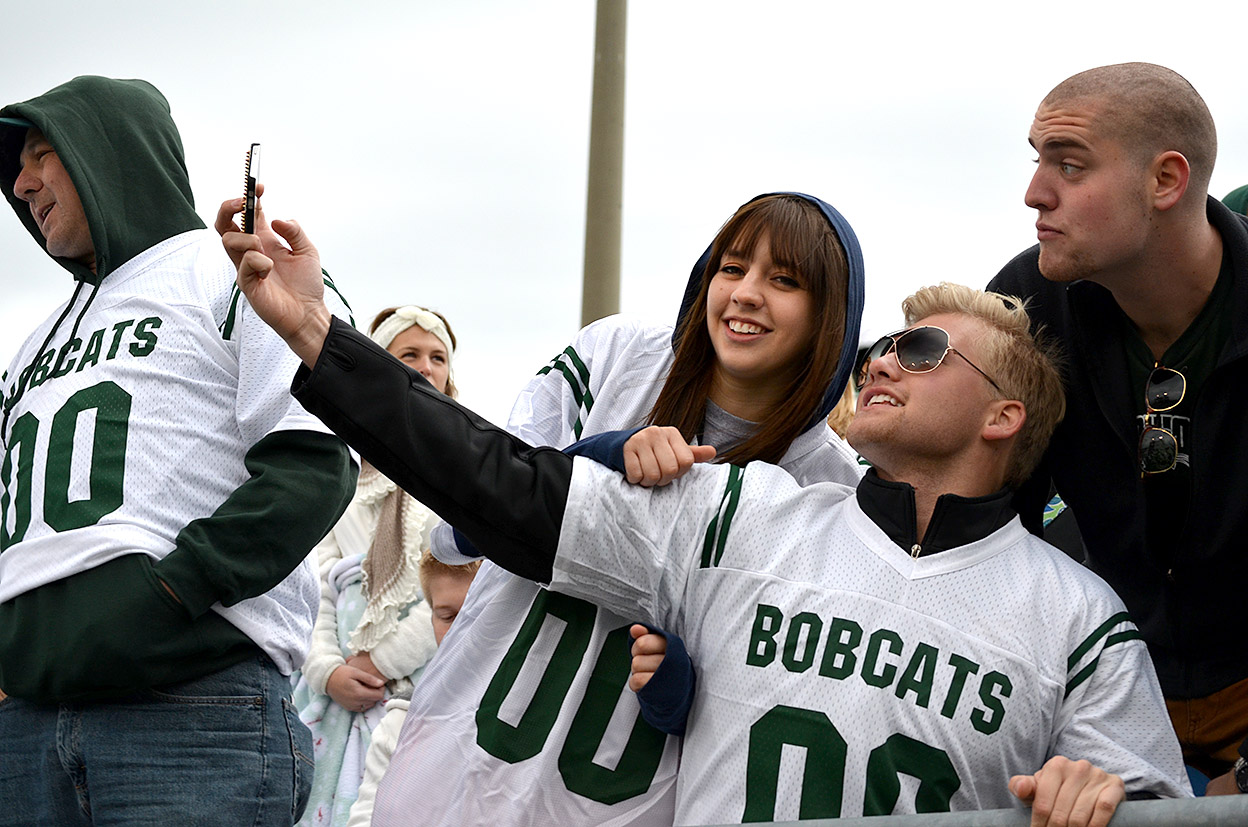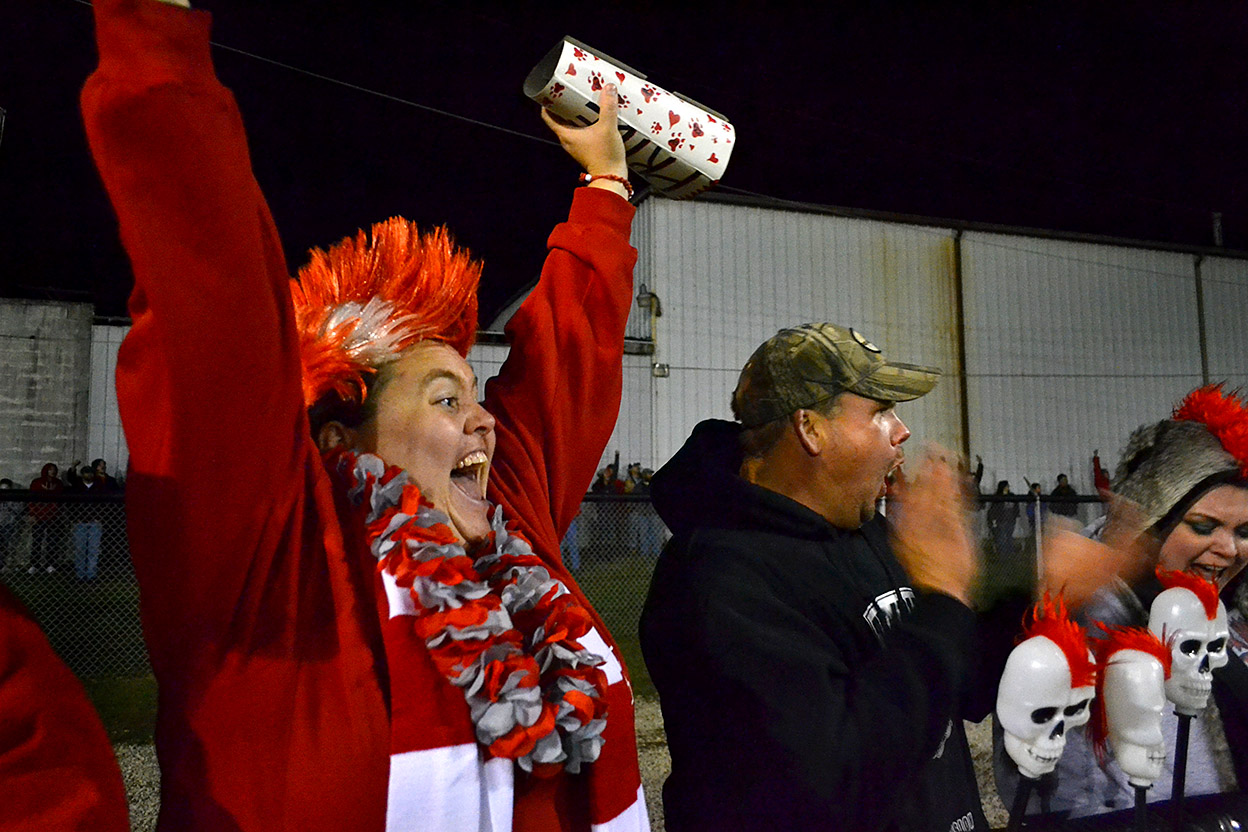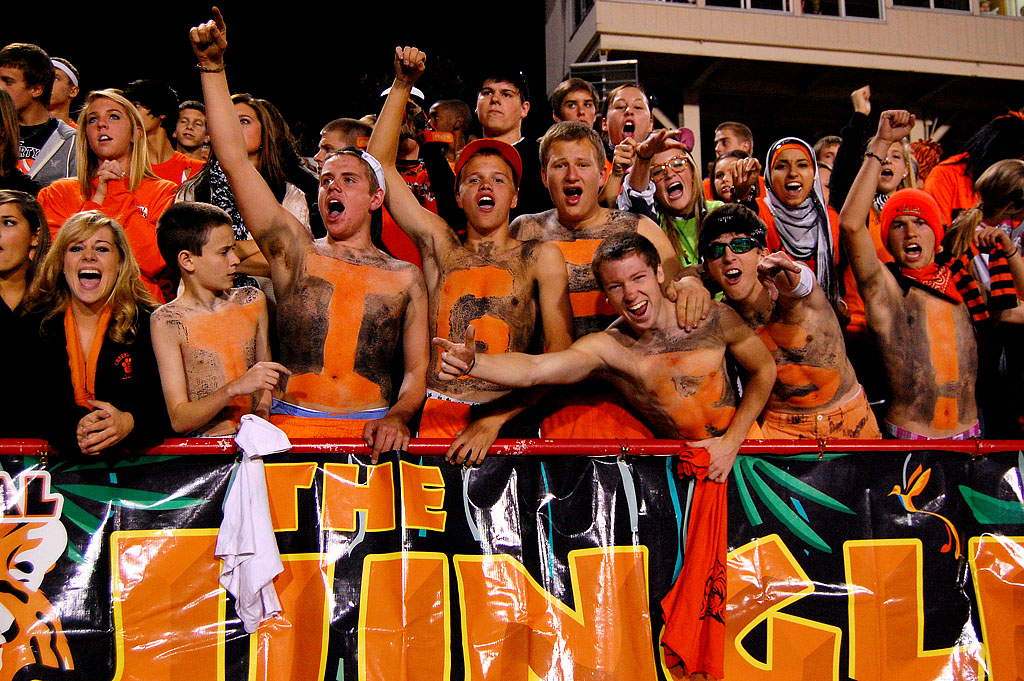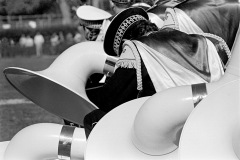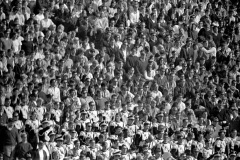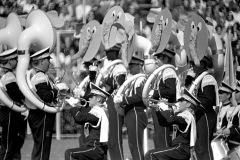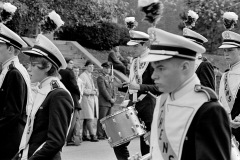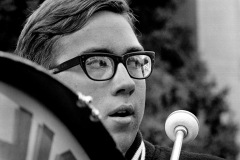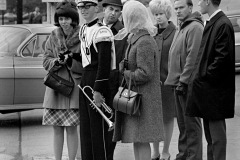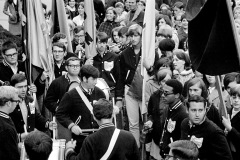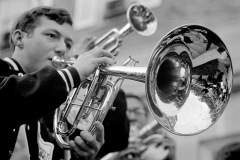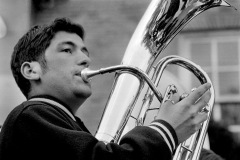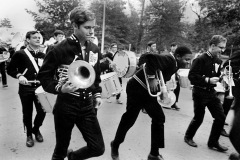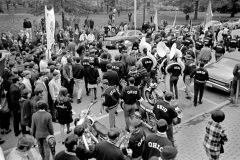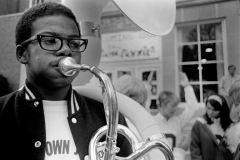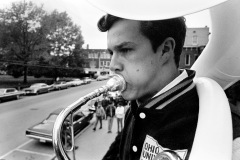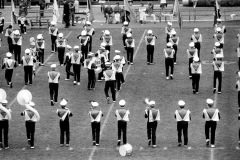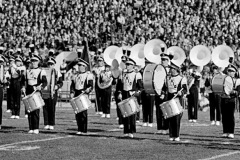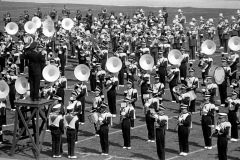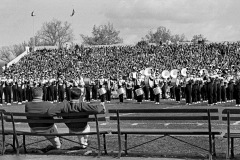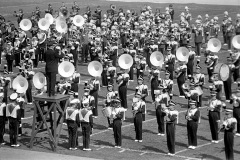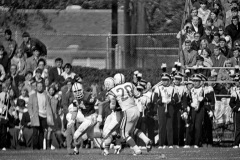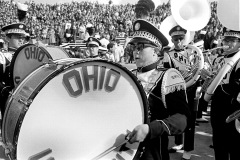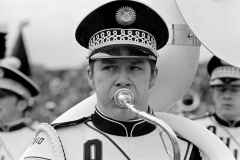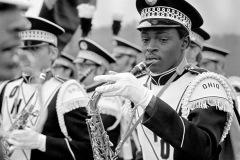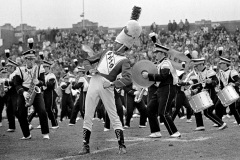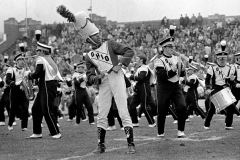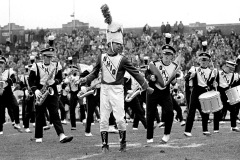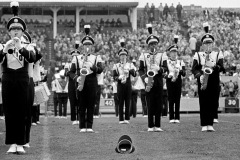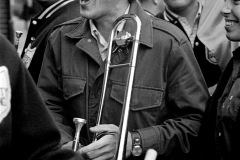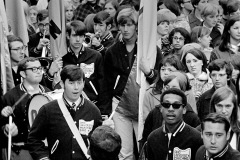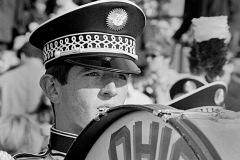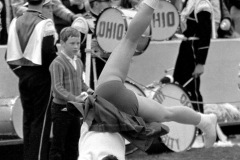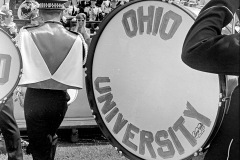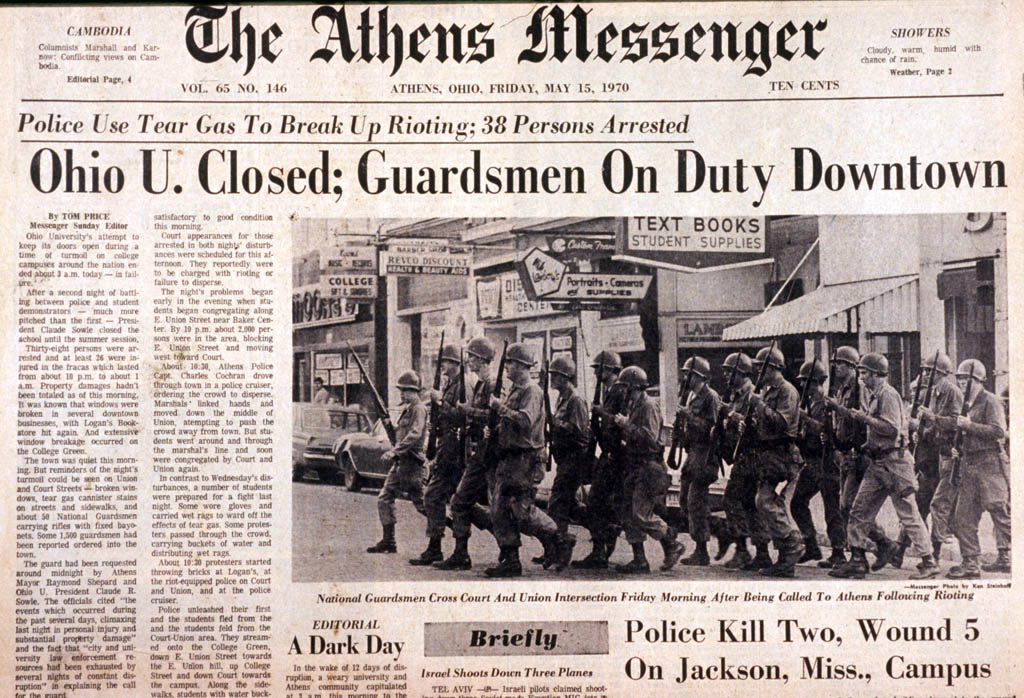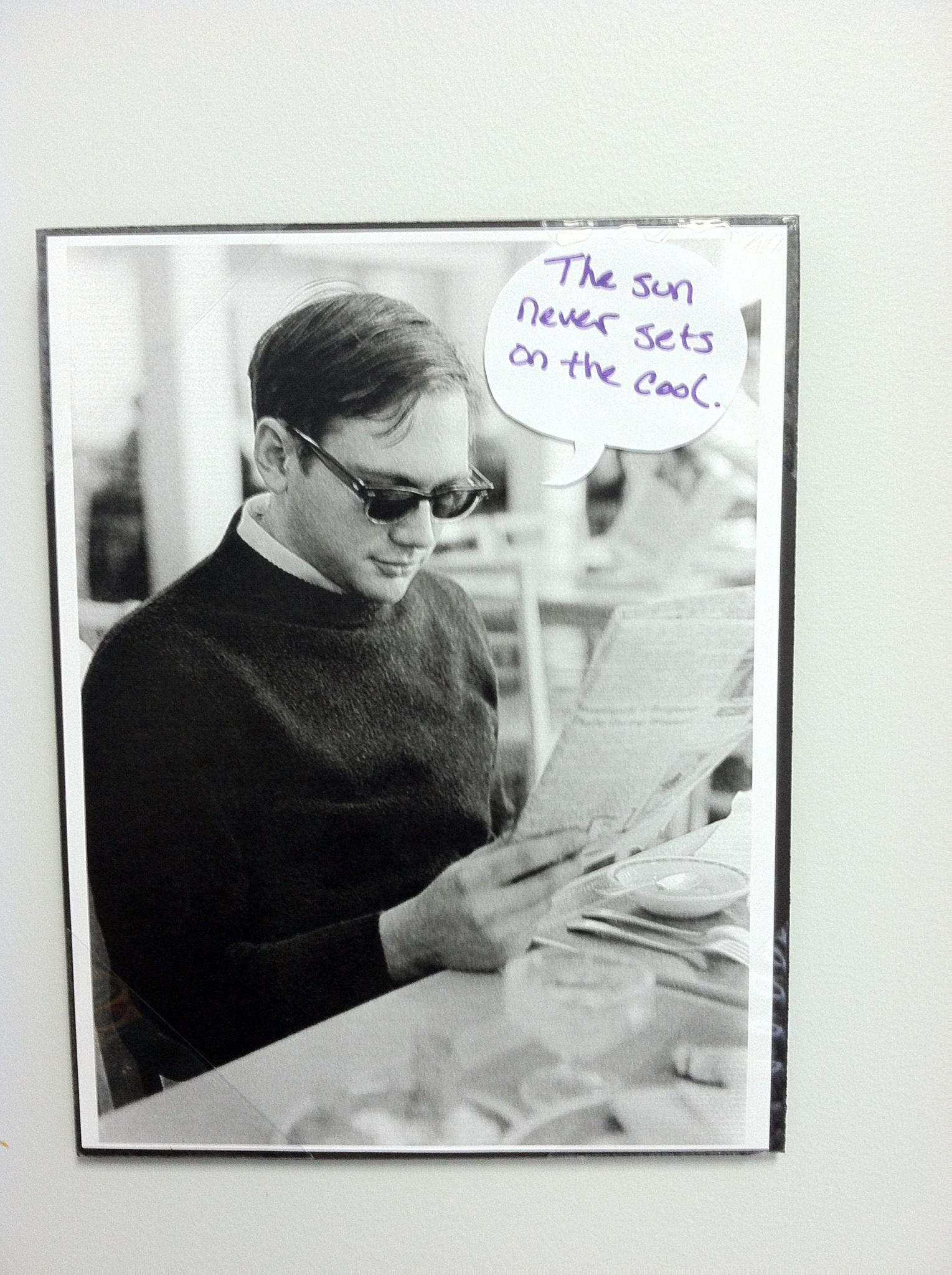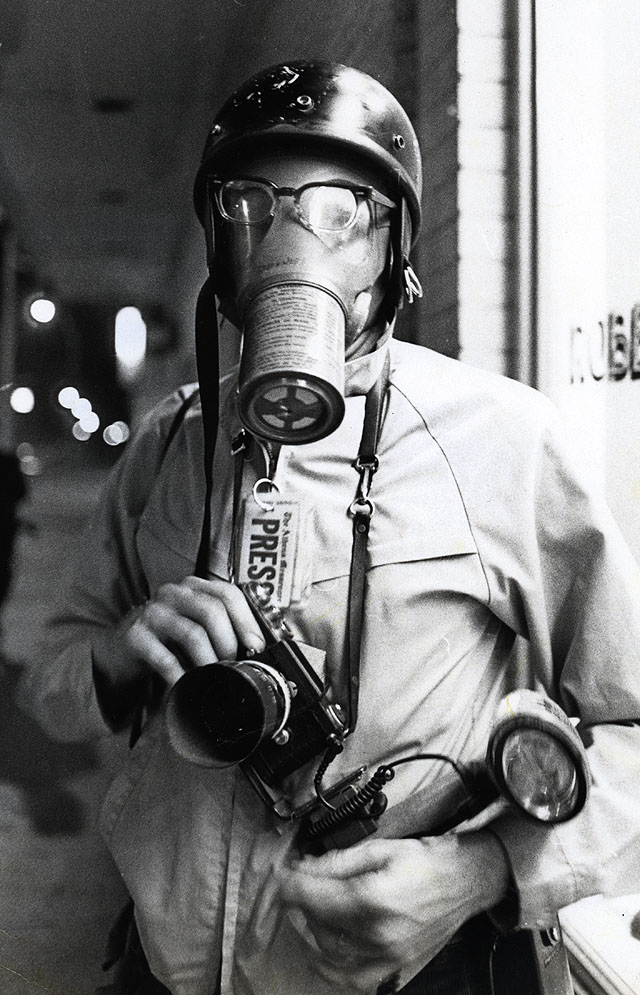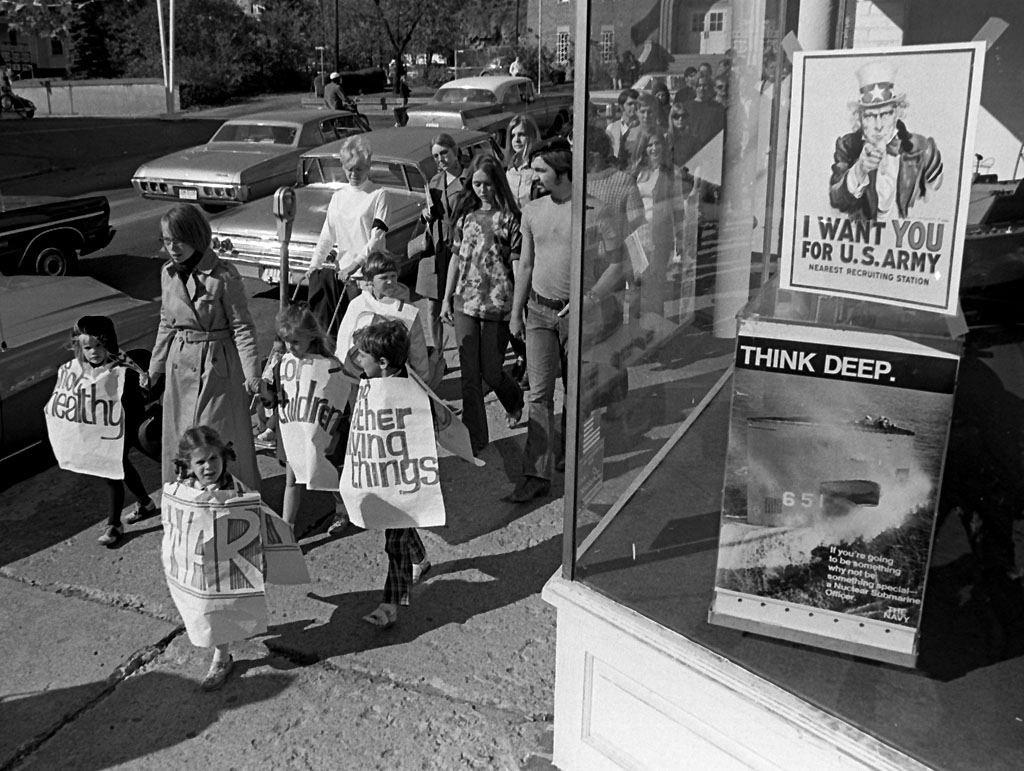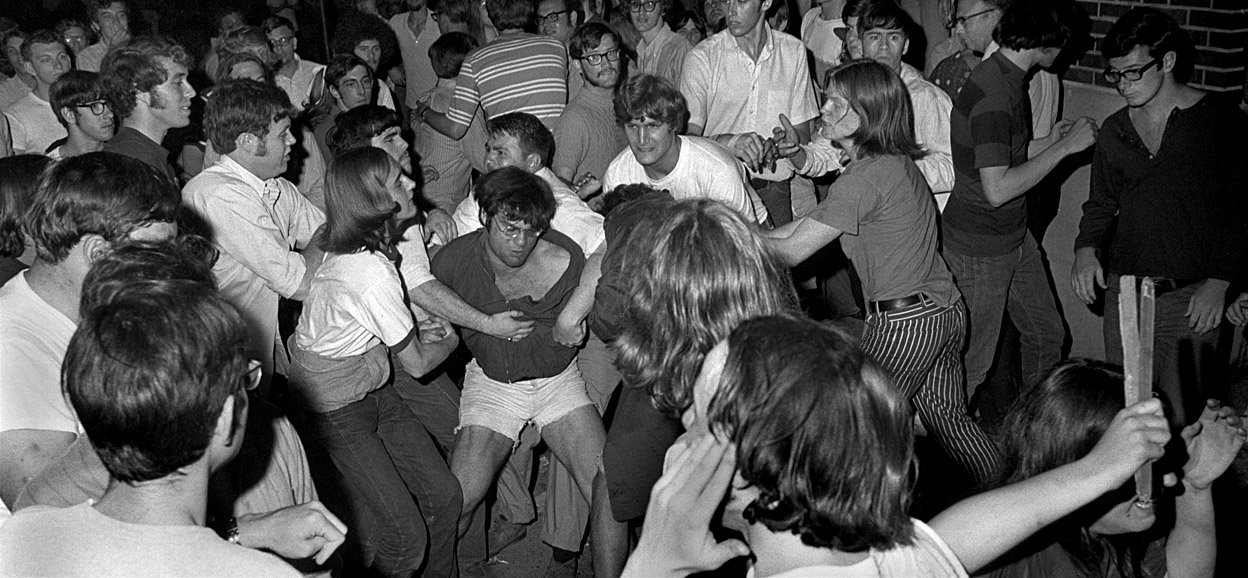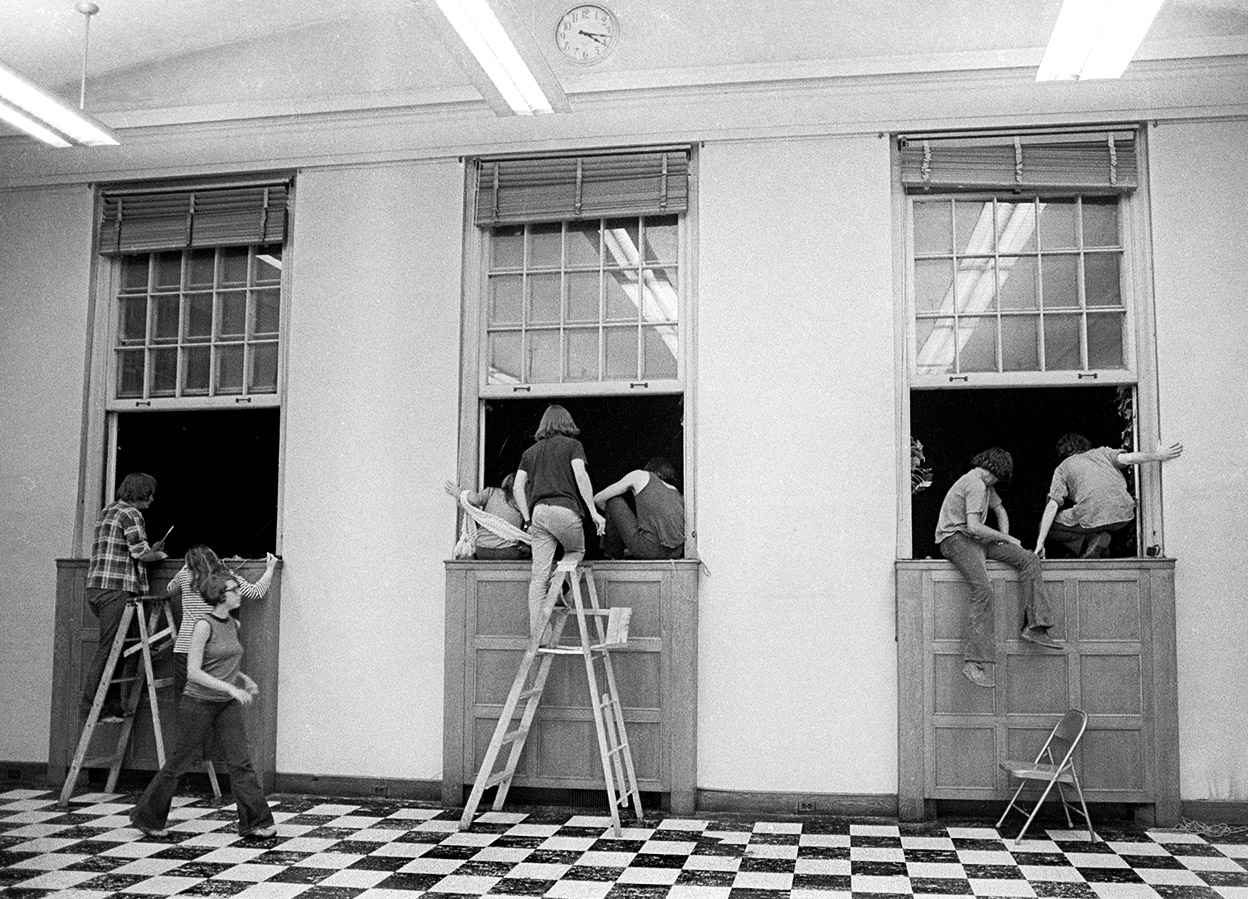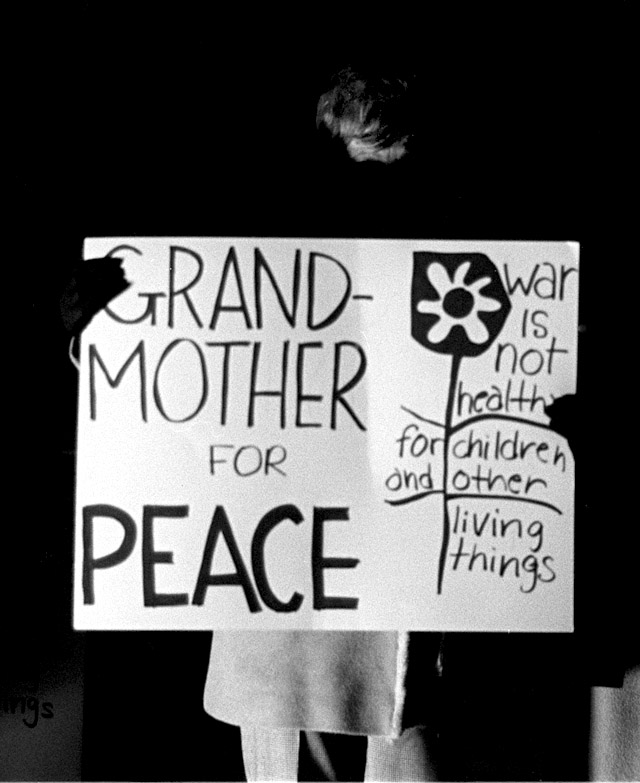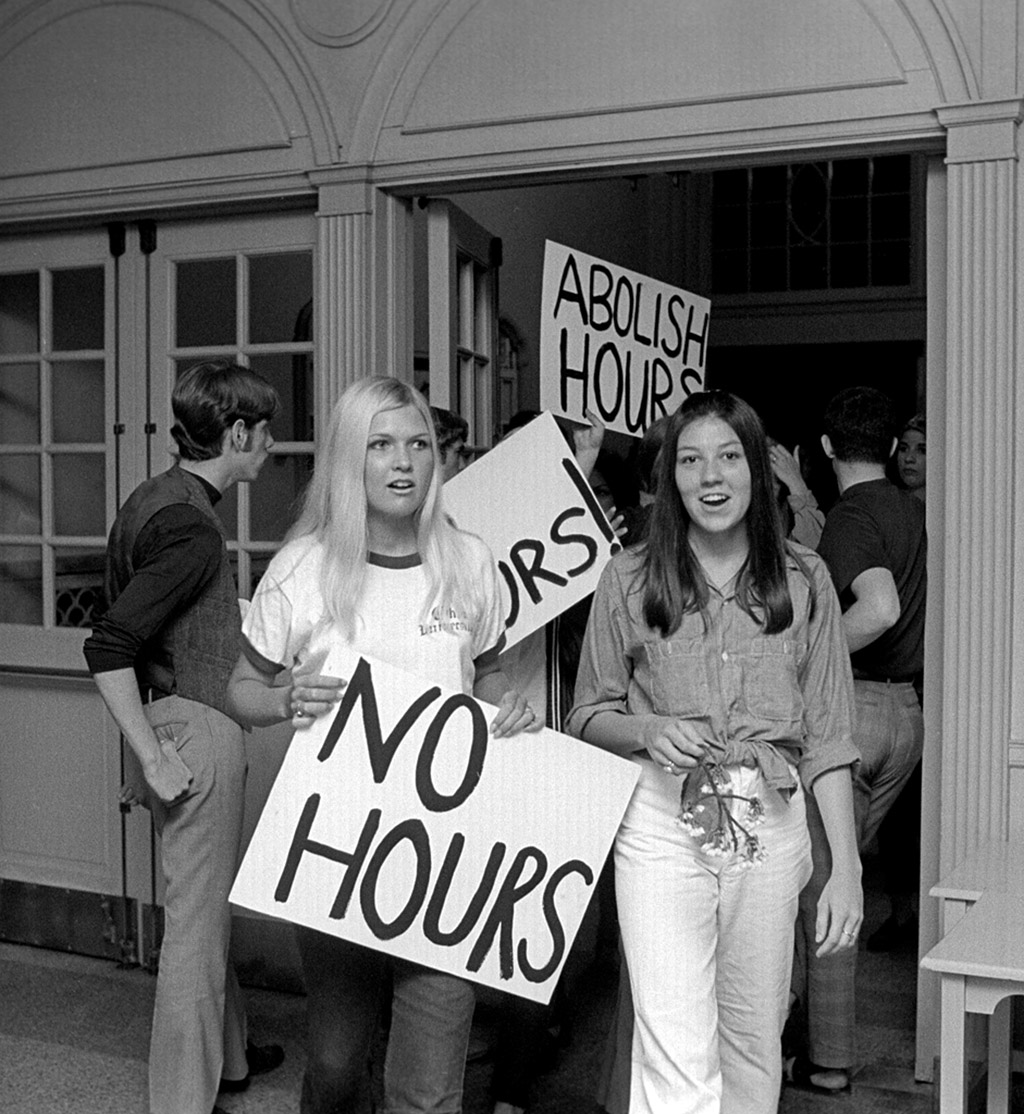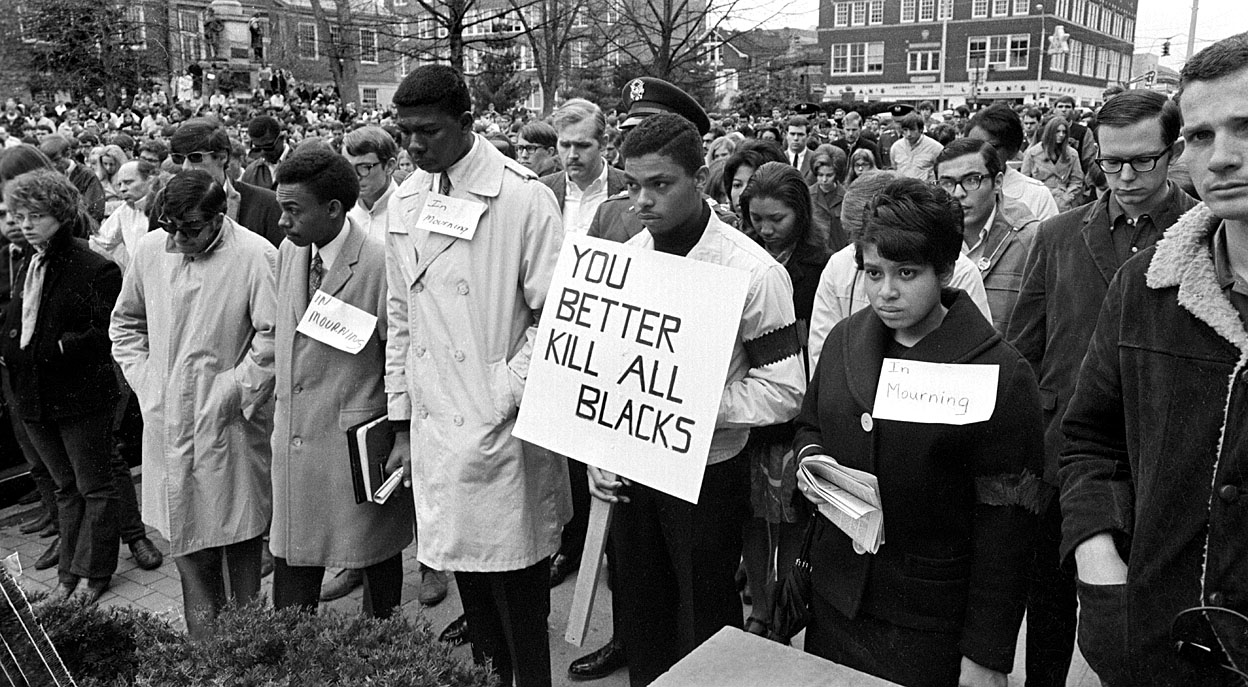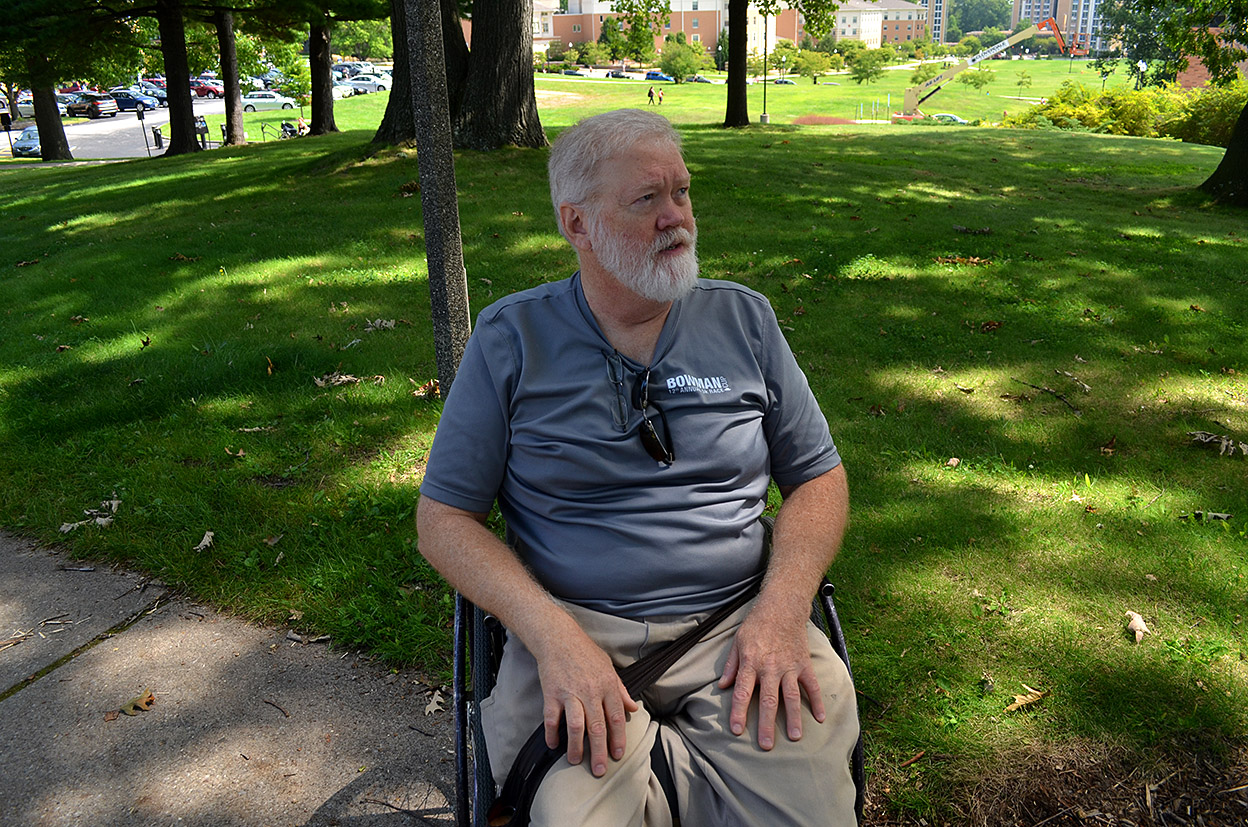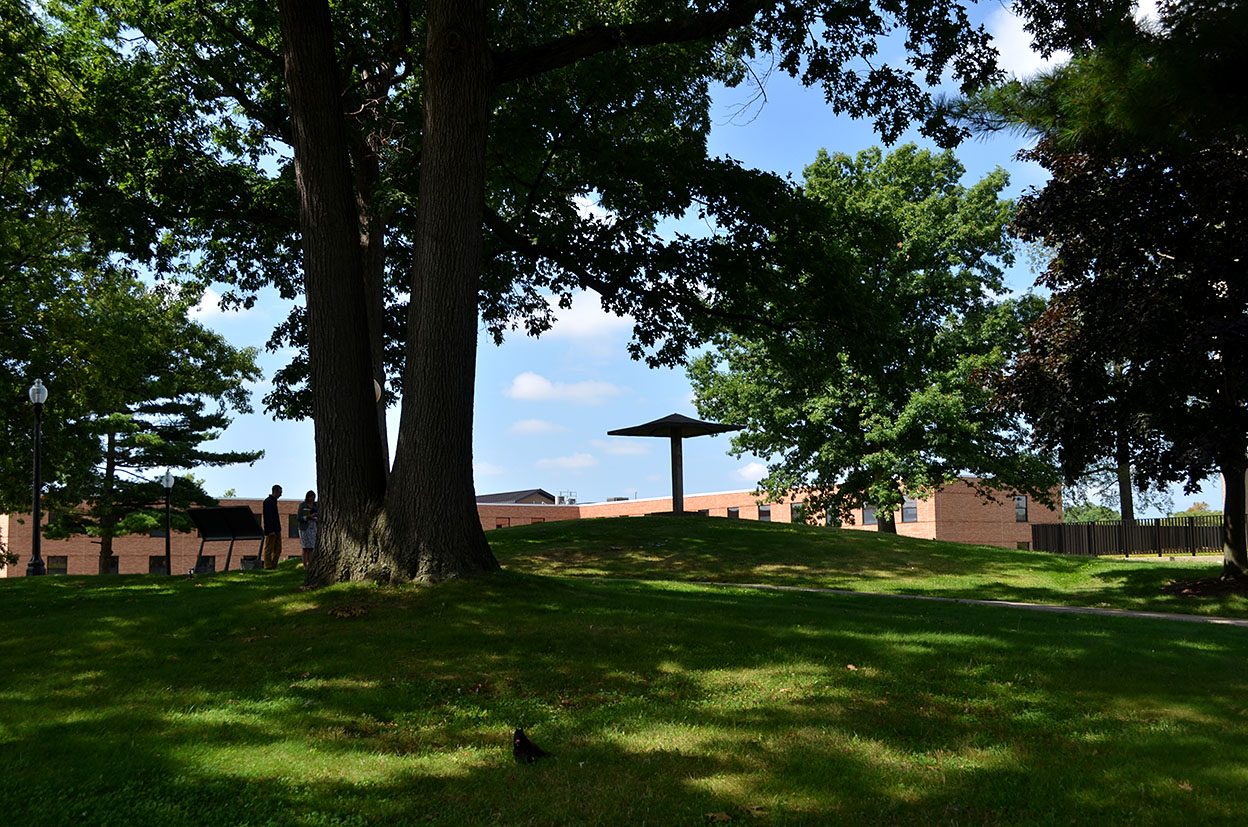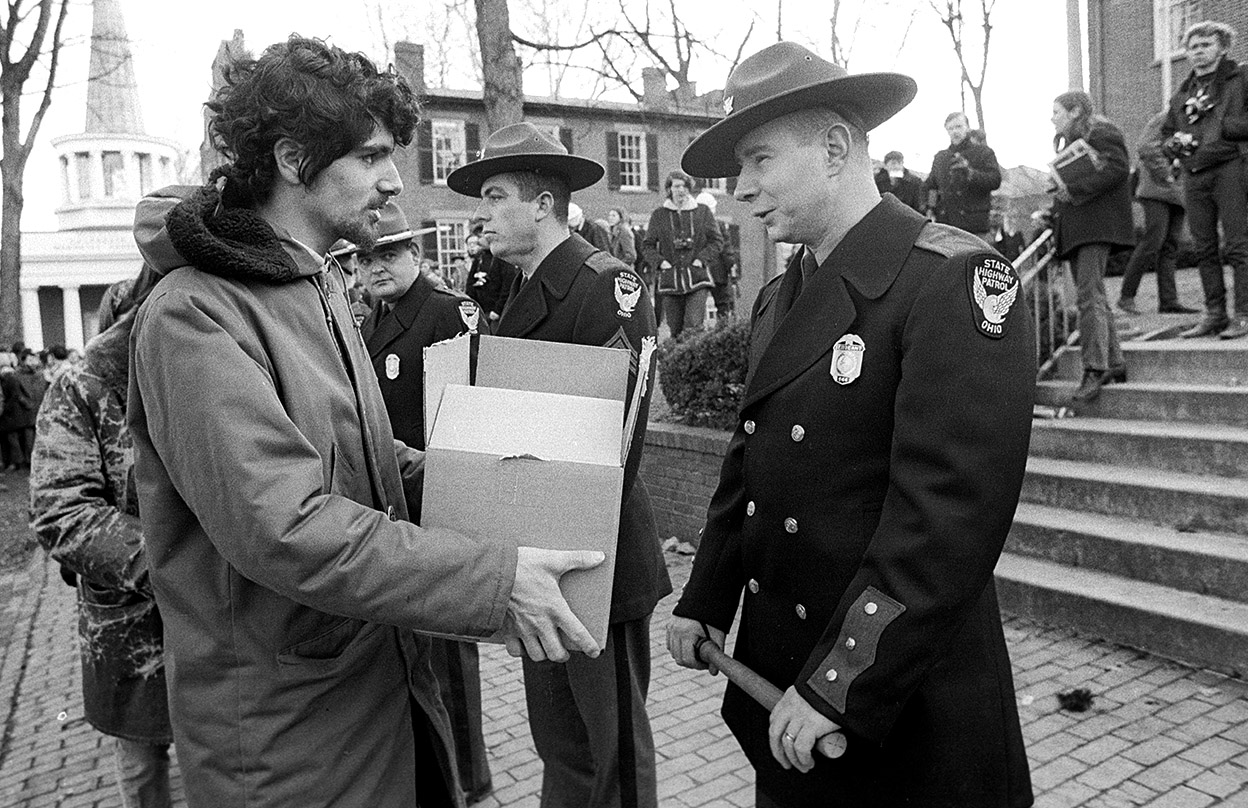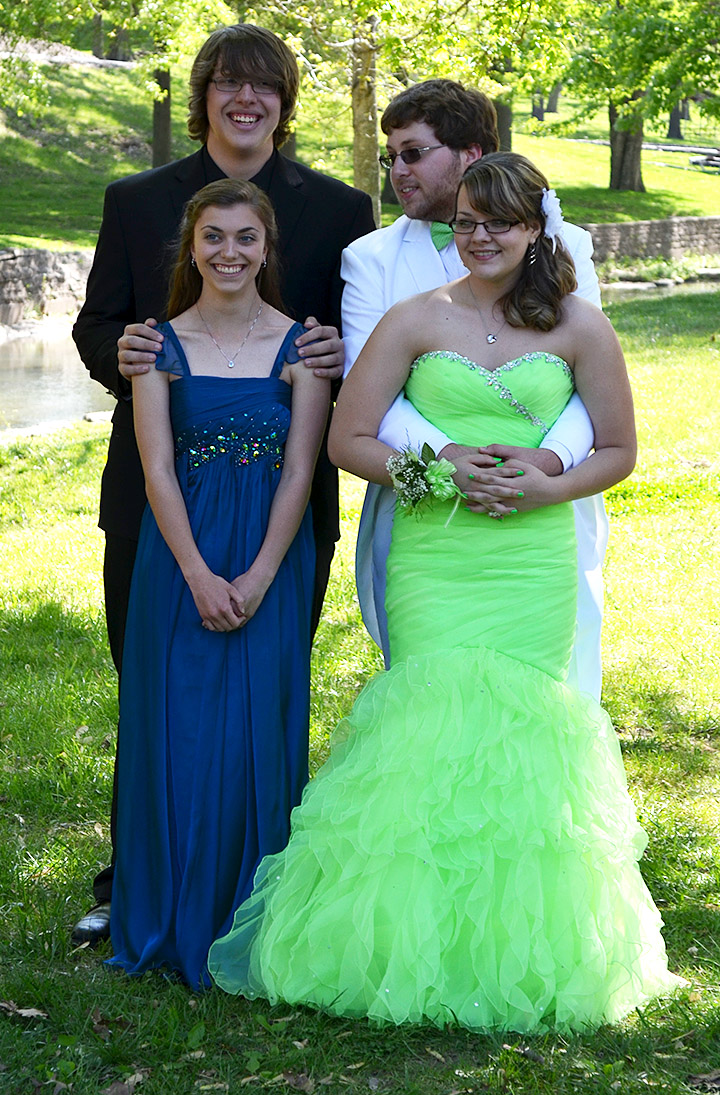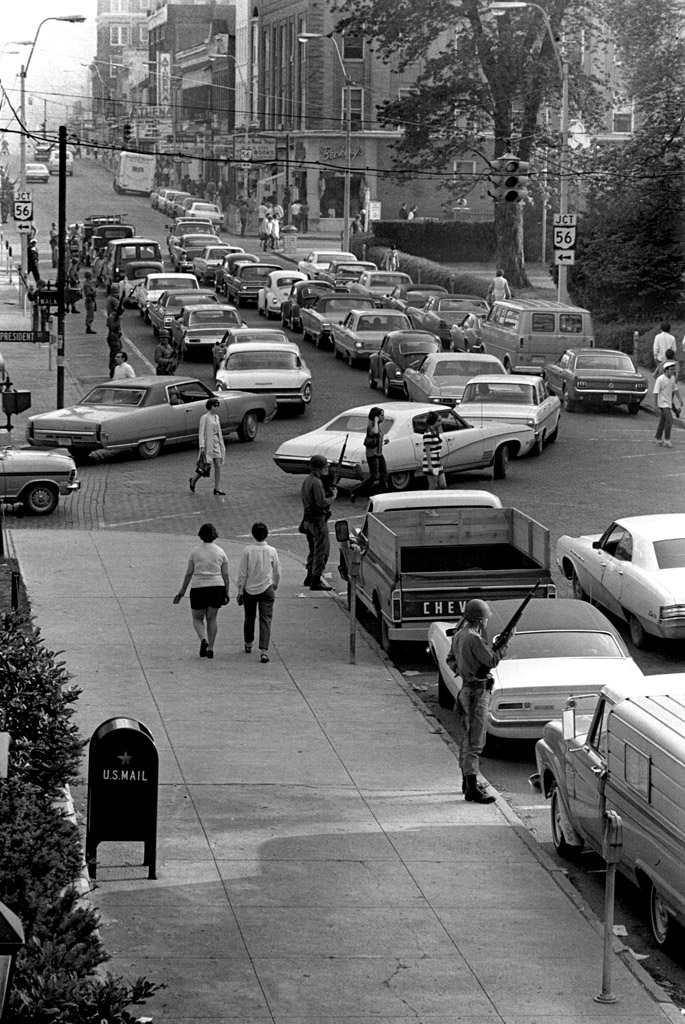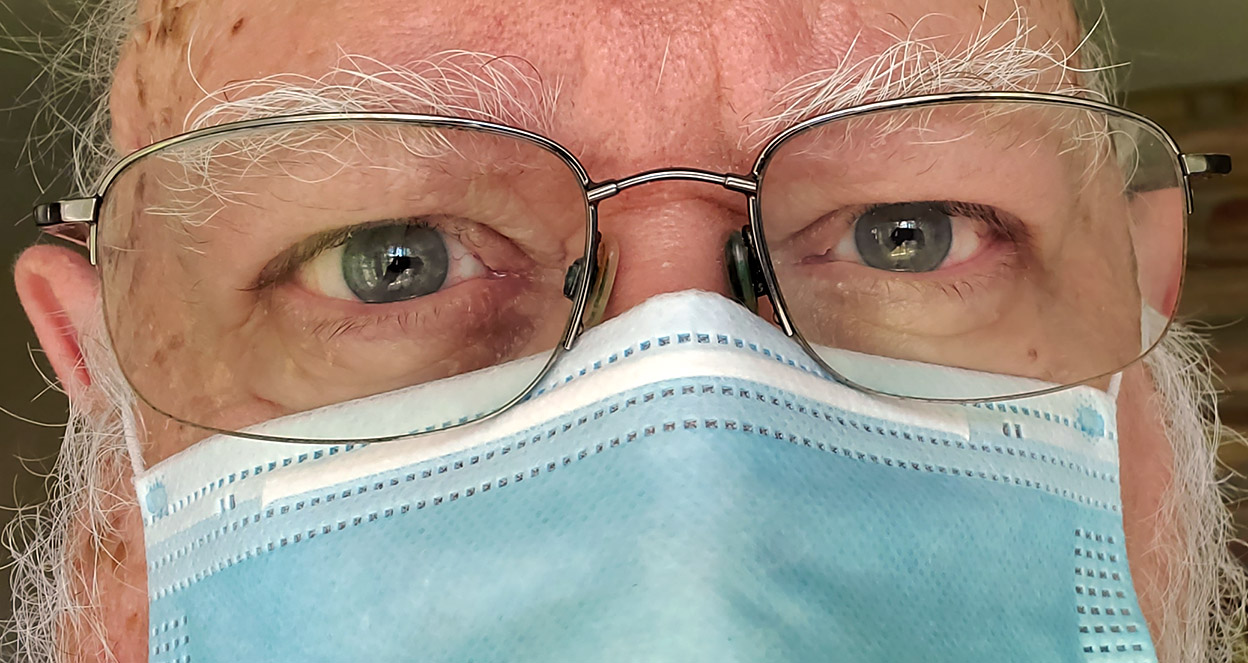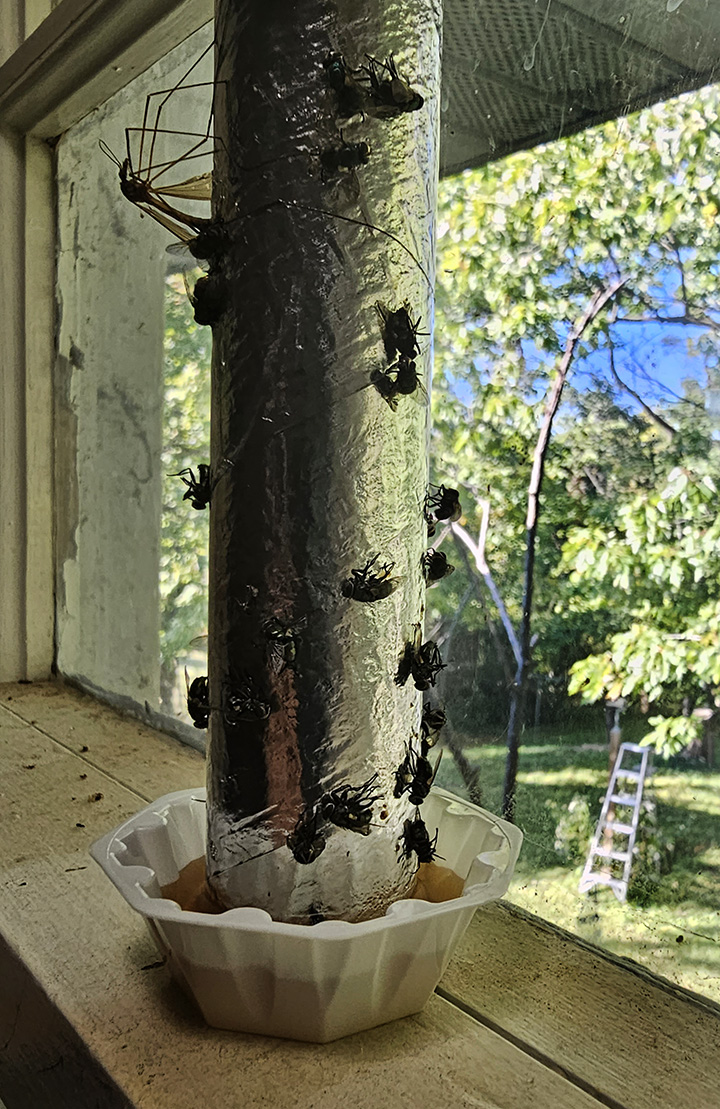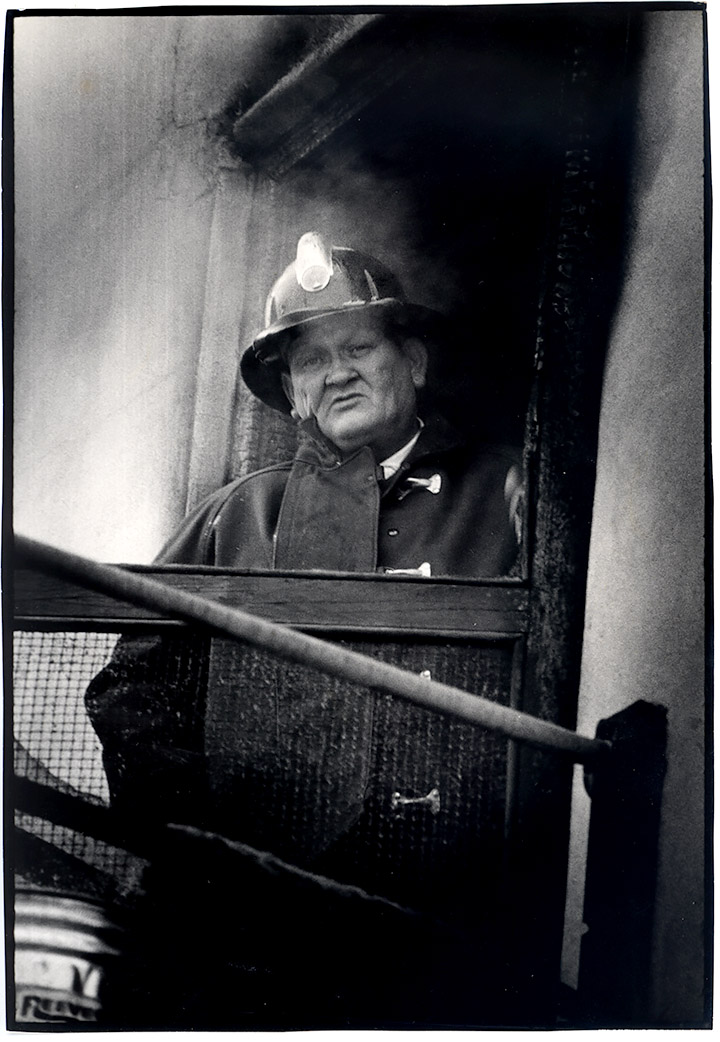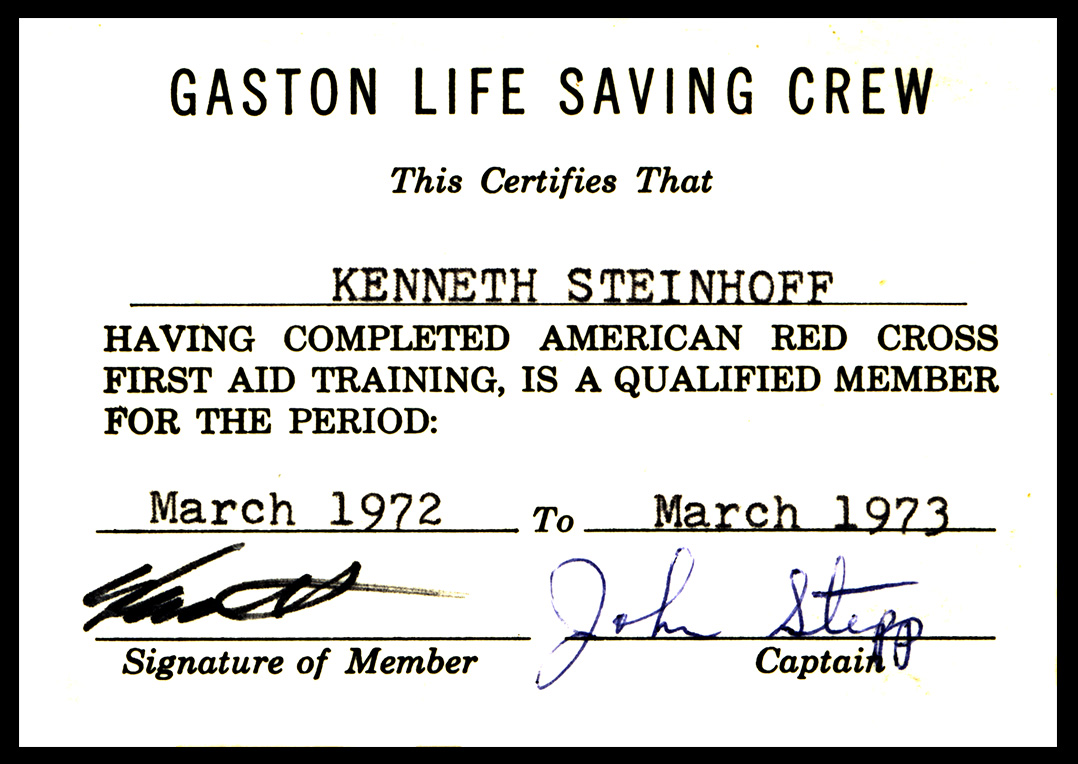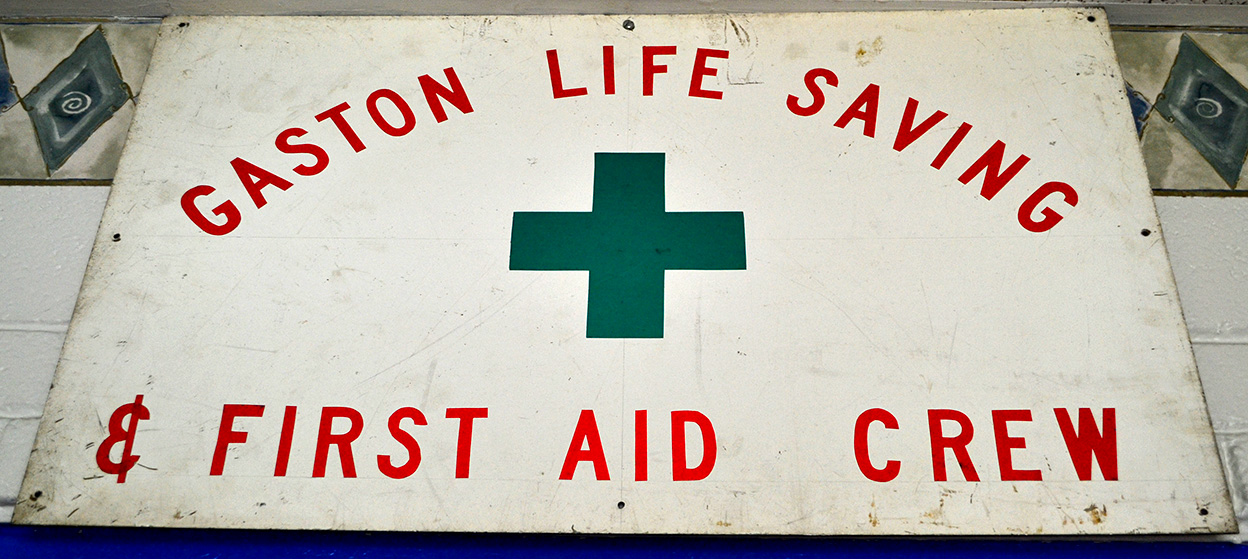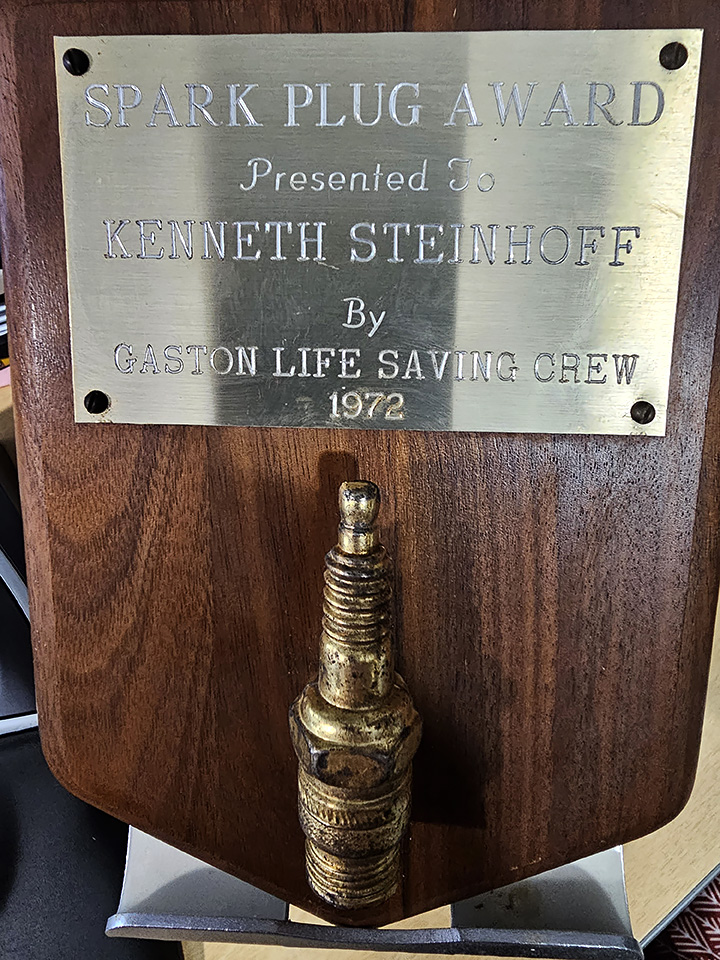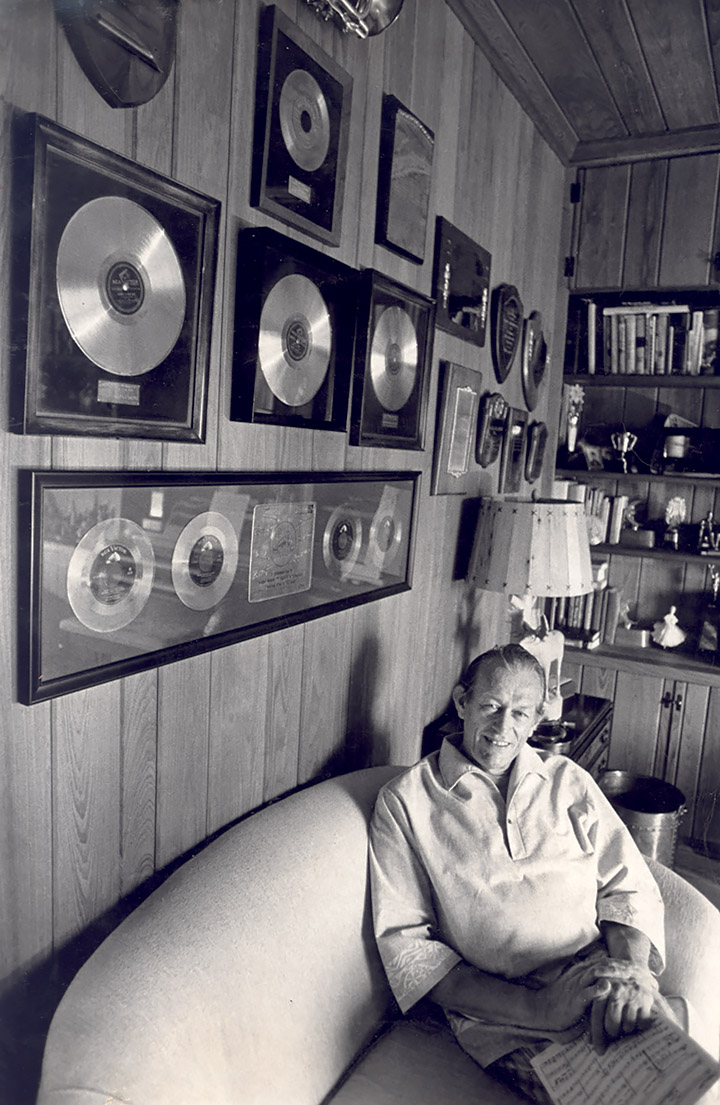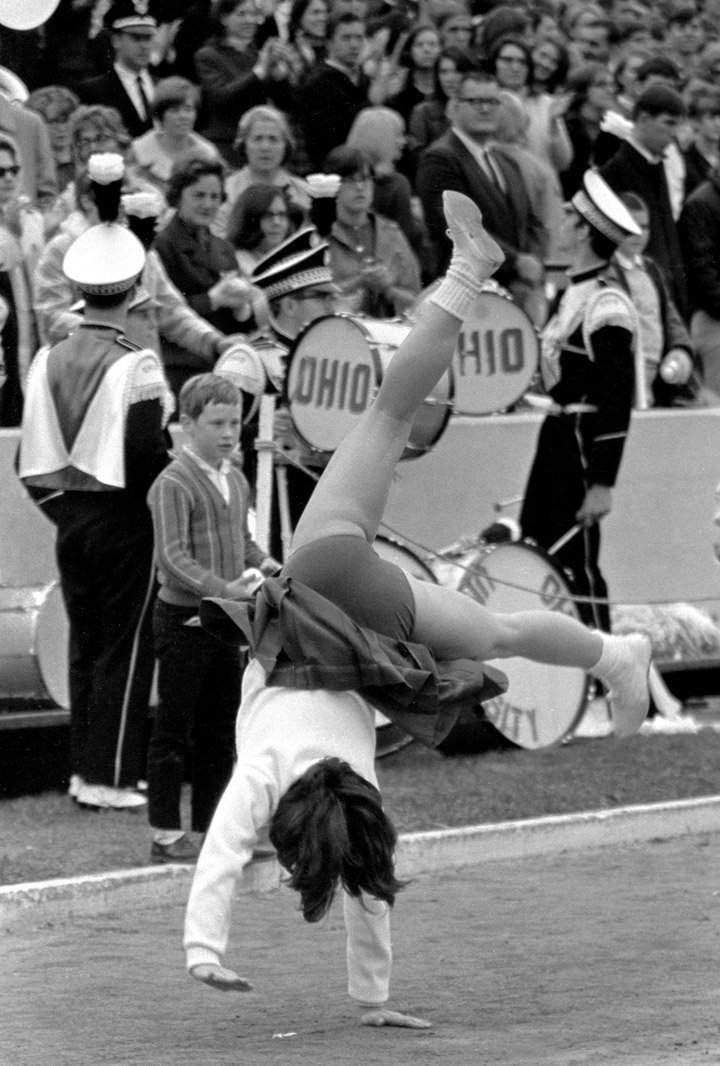
I’ve been on an orgy of scanning lately. I digitized all of the 1967-68-69 and 70 Ohio University football games, and printed more than 600 pictures for a reunion of my old paper, The Palm Beach Post.
I created a subset of the football pix that showed the OU Marching 110, considered one of the best college bands in the county, because I have two grandsons in marching bands. The older of the two was recruited out of his middle school by the local high school. Both boys were recognized as section leaders.
I guess I should explain this photo
Anyway, I need to explain why my eye kept coming back to this photo so that I don’t come across as a dirty old man who has a picture taken as a dirty young man.
When my high school buddy Jim Stone convinced me to transfer to Ohio University in Athens my junior year, I have to admit I didn’t realize that it was a fine arts school, not a journalism school. I felt as welcome as a beer can at a Baptist picnic. Some of my classmates called me a prostitute because I took pictures for money, not “art.”
So, let me give a fine art spin on my cheerleader picture. That’s a bit of a departure for me because I always contended that my photos stand by themselves with maybe a little who, what, where, when, why and how help.
I wanted a machine that would freeze time
I’ve written before how most kids wanted to build time machines that would let them jump behind or ahead of the present day. I wanted a machine that would freeze time, and that’s why I became a photographer.
This young cheerleader is frozen in mid-cartwheel. Her hand is reaching out to land, her legs haven’t begun their transition over the top, and she’ll be in that pose forever. The other thing that strikes me is the complete disinterest the folks in the crowd showing. She’s giving her all, but nobody cares.
I captured a young woman in the prime of her life who is probably a grandmother today.
The band was a family
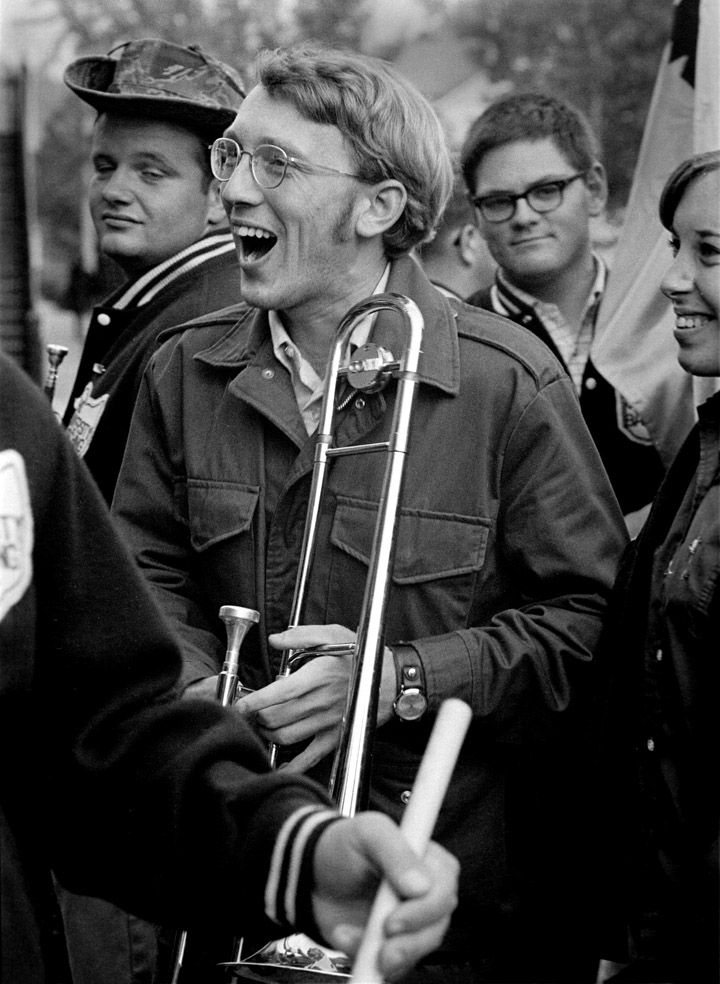
Curator Jessica and her sister, Elizabeth, were both in the Marching 110. Jessica would describe how close her bandmates were then and now. I’ve seen pictures of her marching with alums down Court Street. As a mature woman, she admits being a little sore the day after, but she’s still glad to lug her trombone down the bricks and gyrate with the youngsters.
I was never a jock or a frat boy, but I had the same sense of belonging as a member of The Ohio University Post newspaper. We lived an breathed the news biz and put out a darned good paper every day.
2013 OU football
At Jessica’s urging, I returned to Athens in 2013 to cover a game honoring the 1968 MAC winners. Since I didn’t have to come up with action pix for the next day’s paper, I took an unconventional approach.
Trimble took football seriously
I was roaming around SE Ohio in 2014 when a guy at the Glouster fire department said there was going to be a big playoff game that night, but they were afraid the home field was going to be too wet to play. They brought in a helicopter to hover over the grass to dry it out.
I had a wonderful time photographing the fans who took an intense personal interest in the game.
Sikeston Bulldogs bite the Tigers big time
When I heard that the Cape Central High Tigers were going to clash with the Sikeston Bulldogs in 2010, I thought it would be fun to relive my old high school football games with a modern digital camera that would let me shoot color where I had struggled to shoot black and white. Both teams were undefeated going in, but the Bulldogs ran all over Central 21-0. Fan spirit can go only so far.
Enough words. Here’s a gallery
Here’s a gallery of Ohio band photos. Click on any picture, to make it larger, then use the arrow keys to step through the collection.

